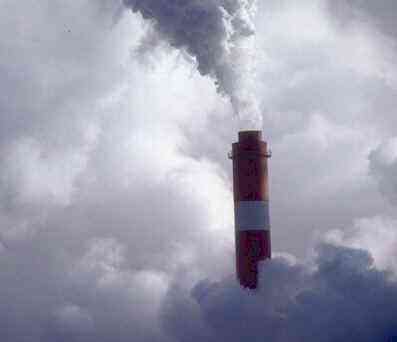Dr. Ed Anderson and Leeann Norgord on Mesaba
July 2nd, 2006

In this weekend’s Grand Rapids Herald Review:
Public health at risk with Mesaba Energy ProjectEditor:
The proposed power plant on the Scenic Highway has generated much recent discussion, but what you may not have heard about yet are the many â??health benefitsâ? that Excelsior Energy states this project will bring to our region.
Excelsior Energy submitted a report to the MPUC in December 2005 detailing the â??health benefitsâ? of this project. This report compares the Mesaba Project to a hypothetical larger pulverized coal plant near the Twin Cities, allowing them to compare their negative environmental and health impacts in a positive light.One â??benefitâ? is that particulate emissions from phase one will result in 1.5 fewer deaths per year in Minnesota and 6.4 fewer people will die per year nationally. There will be a peak air quality effect near the plant, and areas with a higher population of older residents will be at greater risk. The mortality risks associated with this plant are only â??somewhat lowerâ? overall, and are â??more concentrated around the facilityâ? as compared to the hypothetical coal plant.
Using this same line of illogical reasoning, the study concludes that fewer people will get sick from bronchitis, asthma, and emphysema/COPD. Fewer children will develop asthma. Fewer people will have heart attacks. Fewer people will have work-loss days. Fewer healthy people will feel sick less often. This is only true if compared to a theoretical pulverized coal plant near the metro region which no one plans to build. Does any of this sound like a benefit?
The truth is that there are no health benefits. The reality is that all of the effects are additive. If this plant is built more people will get sick, and more people will die. The negative public health impacts extend well beyond the effects of particulate matter, and there are substantial dollar costs associated with the resulting mortality and morbidity (illness). This all adds up to a significant negative public health impact for Itasca County and beyond. The project may provide a â??benefitâ? to someone you know and love. Can you accept this? Should we accept this?
This project carries huge public financial risk, will be a major negative environmental impact, and has public health concerns too numerous to fully discuss in this venue. The few lobbyists that make up Excelsior Energy are very good at putting positive spin on the many negative aspects of this project. They have done an amazing job of getting legislation passed for their own personal benefit, have secured millions of public dollars for a venture too risky for private investment, and have little or no personal equity at stake. This project is far from a done deal. Think of what you might consider appropriate benefits for a project with a downside of this magnitude. Who really benefits? What are the actual costs? These are all things that we need to fully consider when deciding if an economic development project is the right fit for our region.
Ed Anderson, M.D.
Bovey
==================================================
Concerns, questions surround Mesaba Energy project
Editor:
I have some concerns and questions regarding the proposed Excelsior Coal Gasification Plant.
I’ve been reading the facts as to the pollutants the Mesaba Energy Project would be emitting into the air/water, specifically mercury.
The Grand Rapids Herald-Review corrected their statement (in June 19 paper) they made in the June 14 article titled, “Excelsior award from DOE celebrated” of “0” emissions of mercury to “lower mercury emissions than regular coal fired generating plant”. Also the article stated they were planning to build 3 coal gasification plants on the Iron Range, but in Excelsior’s paperwork, they propose to build 6 gasification plants in northern Minnesota.
The plans for the gasification plant also intend to shorten the stacks to 150 ft. vs. 700 ft. in the regular coal fired plants. With the 700 ft. stacks, some particulates are able to drop back into the stack with a smaller percent going into the atmosphere approximately 200 or more miles, but with the 150 ft. stacks, this would not be the case. The particulates would be more concentrated and would fall within a 5 mile radius. So the communities close to this plant (Taconite, Marble, Coleraine, Bovey, Calumet) will have concentrated mercury and other pollutants falling into their back yards.
Now, even with the EPA’s standards of allowable mercury into the atmosphere/lakes, there are current reports stating pregnant women and children should not be eating fish more than one time per week in some lakes, and not more than one time per month in others due to the mercury content. What is going to happen to northern Minnesota lakes, rivers and tributaries if Excelsior is allowed to build not only one plant, but six plants emitting these pollutants? Will we be prevented from safely eating not only the fish, but the wildlife (deer, moose, bear) who eat the grasses, berries, etc. and drink the water, that these pollutants fall upon? I urge all the local people to investigate what is being told to the public vs. what is on the Web site mncoalgasificationplant.com which is Excelsior’s own paperwork and statistics.
I would hate to see our beautiful Northland become an industrial waste site, especially since the electricity will not be used here and the majority of jobs are only for those who are specially trained and experienced in these types of plants (construction included).
Lee Ann Norgord
Bovey
Leave a Reply